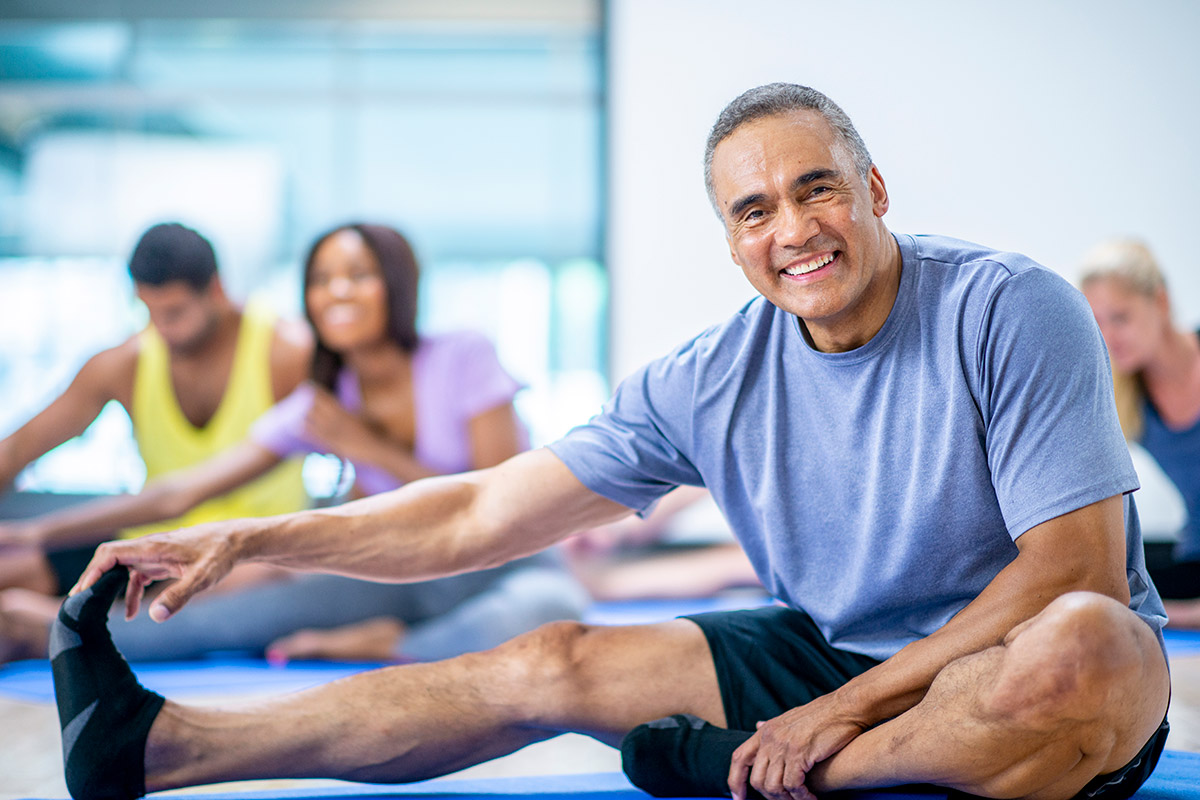Basic Stretching For Beginners
Stretching isn’t just something that dancers, gymnasts, and runners should be doing. It’s important that individuals, not just those that are completing intense workouts, stretch daily to encourage flexibility and prevent weakening muscles. Failing to stretch can make the muscles shorten and tighten, making you more likely to suffer from pain, stiffness, and muscle strains. Learn more about why stretching is beneficial and the different types of stretching you can incorporate into your routine.

Increase Flexibility and Range of Motion
Increasing your flexibility isn’t just about shaping yourself into a pretzel for the latest trending yoga pose on Instagram. Increasing your flexibility improves your overall health. It will allow you to perform everyday activities that may seem simple to some but can be difficult for those who have mobility and flexibility issues. Working on your flexibility by stretching can increase your mobility and range of motion, which is especially important as our bodies begin to stiffen up as we age.
Improve Posture
Especially in combination with strengthening your muscles, stretching can improve your posture and put your body in proper alignment.
Relieve Tense Muscles
If your muscles are often tense and you’re experiencing pain, stretching is the best way to relieve that strain. When you undergo stress—both physical and emotional—frequently, you may notice that your muscles tense up in response. Stretching will not only help loosen those muscle groups that are prone to tightening—like your shoulders and neck—but it’s a great way to help you relieve stress and calm down, too. You may find relief if you suffer from tension headaches, too. Stretching also helps to prevent biceps tendon injuries.
Prepare for Activity
There’s a reason you see athletes stretching just before they’re about to run a race or start the game. It helps them to perform their best by preparing their muscles for the work they’re about to do. Not only that but stretching can improve your circulation and increase blood flow to your muscles. This can shorten recovery time and even reduce soreness after an athletic event or strenuous workout.
Static Stretches and Dynamic Stretches
There are several types of stretching you can try out, but the most frequently used stretching techniques are static stretches and dynamic stretches. Dynamic stretches are typically performed before you exercise because they warm up the body. These movements put your muscles and joints through the full range of motion and can mimic the movement you’ll be doing in your activity. For instance, a swimmer may circle their arms a few times before diving into the water, or a runner may swing their leg back and forth. Static stretches are great after you have exercised. Static stretching consists of holding the body in a comfortably stretched position for a period.
If stretching every day seems impossible, aim for at least three days per week. Remember: you don’t have to stretch every single muscle in your body. Focus on large, frequently used muscles groups like the calves, hamstrings, hip flexors, shoulders, neck, and back. You can speak with your CAO physician or therapist about the best stretching regimen for you.

